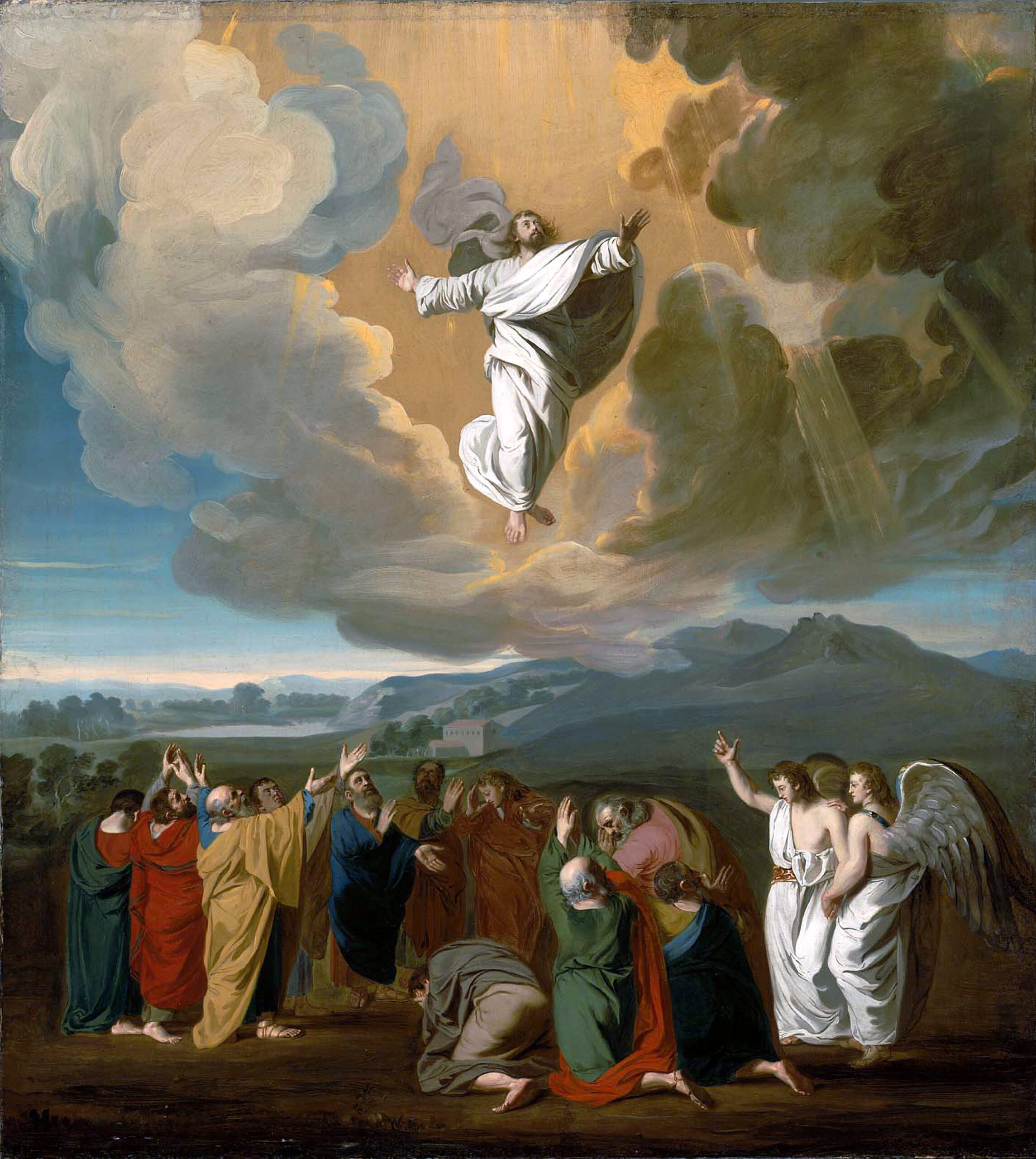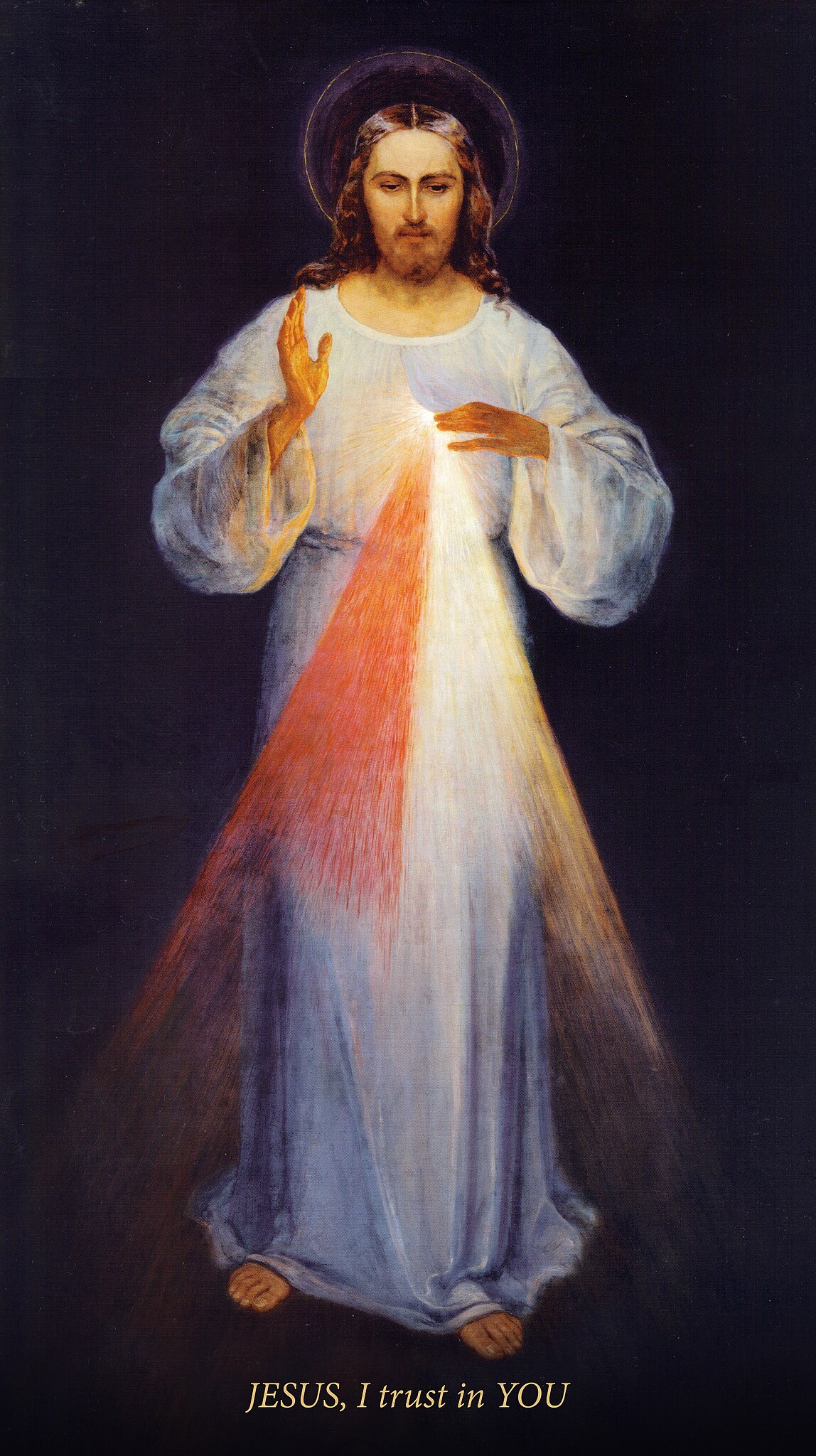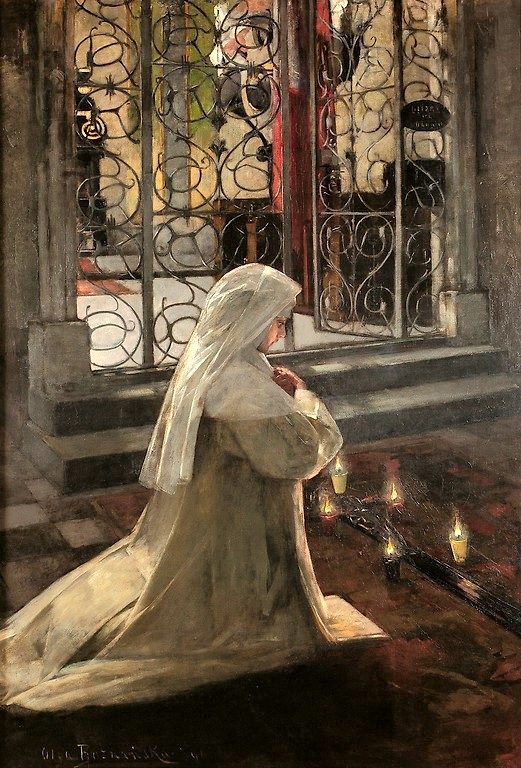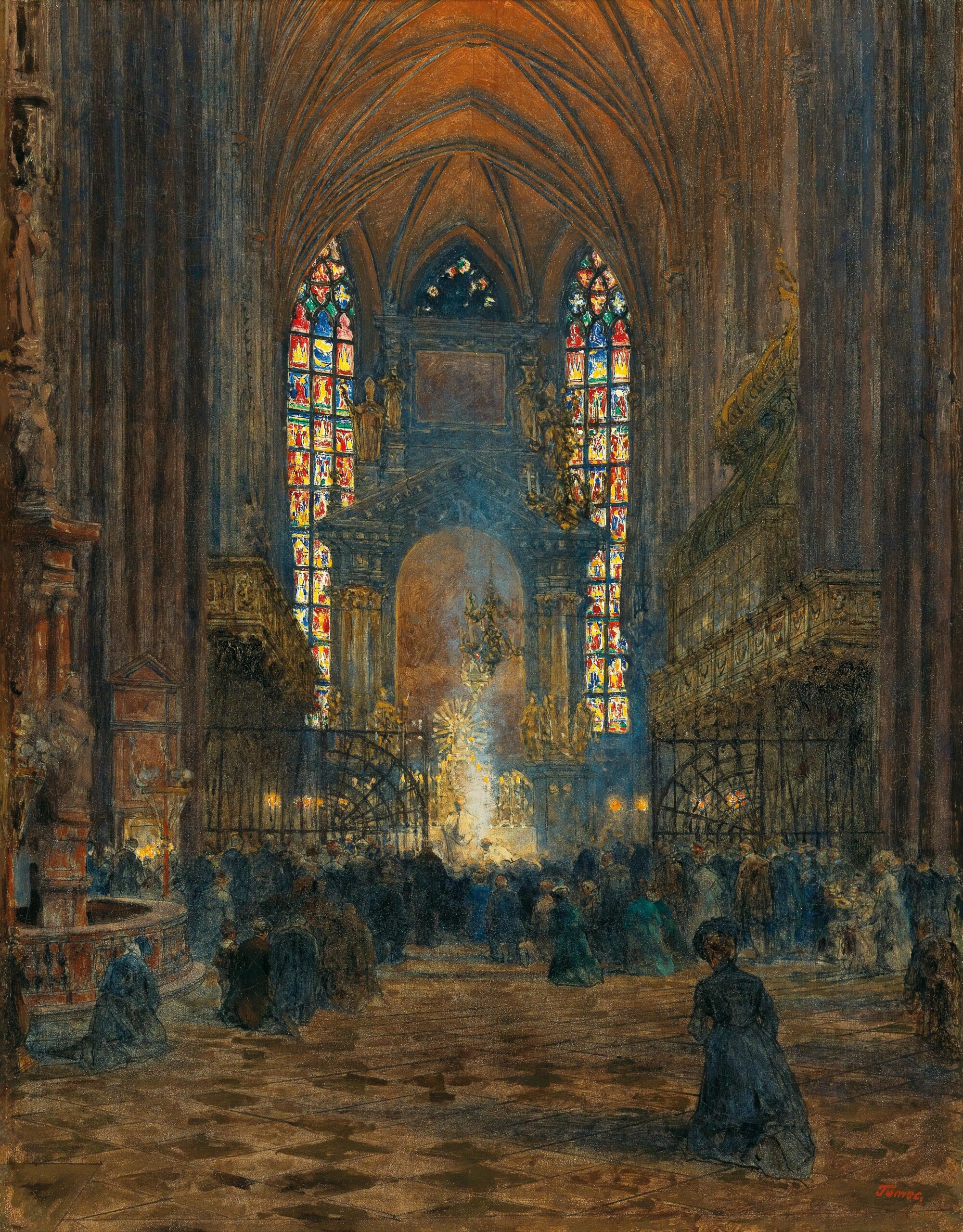Blessed Gerard founded the Hospitaller Order of St. John (later known as the Order of Malta) in the mid-eleventh century, circa 1070. He died in Jerusalem around 1120.
Nothing is known of the early life of Blessed Gerard; his date of birth and surname remain a mystery. However, historians have pierced together reliable, if limited, information about his adult life in Jerusalem from around 1060 to his death.
Gerard lived in a violent and war-torn century marked by the bloody First Crusade (1096-1099), which returned Jerusalem to Christendom after over four hundred years of Muslim control.
From the fourth century onwards, a pilgrimage to Jerusalem was regarded as the most effective way of ensuring the forgiveness of sins, and thousands of Christians made the perilous journey annually.
An extraordinary number of pilgrims began streaming into Jerusalem around the year 1000, very likely reflecting the popular expectation that the new millennium would usher in the second coming of Christ.
The relatively high numbers of pilgrims to the Holy Land persisted, only slightly diminished, throughout the eleventh century.
As the eleventh century progressed, travel to the Holy Land became increasingly dangerous for pilgrims. The safety of the millennial pilgrims weas insured by the 1001 treaty between Byzantine emperor Basil II and the caliph al-Hakim bi-Amr Allah (985-1021), but this fragile agreement was broken by al-Harkim in 1009 when he turned on the Christians and destroyed the Church of the Holy Sepulchre.
In 1065, a large contingent of German pilgrims was set upon by Muslim outlaws, and two-thirds of the Christians were killed. In the wake of the disastrous Christian defeat at Manzikert in 1071, the Byzantine emperors gradually lost control of Anatolia to the Seljuk Turks, making the pilgrim route to Jerusalem more perilous than ever.
The danger of traveling to the Holy Land did not, however, deter the Italian trading cities from opening and plying trade routes between the Levant and Europe.
Writing in the twelfth century, William, archbishop of Tyrne, asserts that around the mid-eleventh century, a group of traders from Amalfi petitioned the caliph of Egypt, who at the time had suzerainty over Jerusalem, for a place where their fellow countrymen could stay when in the holy city.
According to William, the caliph gave them a site near the Church of the Holy Sepulchre. The Amalfitans built a church (The Church of the Redeemer), a monastery (St. Mary of the Latins), and a convnet (dedicated to St. Mary Magdalene).
The brothers in St. Mary of the Latins, likely including Fra Gerard, subsequently constructed a hospital and dedicated it to St. John the Baptist. These dedications were probably no coincidence, since the cathedral in Amalfi was named in honor of both the Blessed Virgin and St. John the Baptist.
Historians generally agree that the Hospital of St. John was established just prior to 1070. This approximate date is based on the anonymous Amalfitan chronicler who wrote that the archbishop of Amalfi, John, made a pilgrimage to Jerusalem in the 1070s. He was hosted by the Amalfitan community and saw the Hospital of St. John and a second hospital for women.
This chronicle also attests to the fact that the hospitals were staffed by at least quasi-religious who took some form of the evangelical vows and wore religious garb.
Given that the archbishop toured the hospitals in the 1070s, it is plausible to date the establishment of the Hospital of St. John to this approximate period.
Since the hospitals were founded by the serving brothers of the Benedictine Monastery of St. Mary of the Latins, it is likely that the nascent, quasi-religious community, which was growing around the hospital serving the poor and sick, was initially influenced by the Benedictine rule.
The first superior of the hospital community was Fra Gerard, whom chroniclers identify as being in office before and after the First Crusade. Pope Pascal II, in his bull Pie postulation voluntatis (1113), recognized Fra Gerard as the founder and superior of the Hospital of St. John.
Most medieval scholars agree that Gerard was an Amalfitan serving brother, perhaps even an ex-merchant, living at St. Mary of the Latins.
Fra Gerard established the Hospital of St. John as a religious association at a time when Benedictine influence on Latin religious life, which had held sway since the early ninth century, was waning.
By the mid-eleventh century, the seeds of this foundation of new religious communities were sown, and alongside the Hosptiallers would come the Templars, Dominicans, Franciscans, Cistercians, and Carthusians.
Fra Gerard was an early founder of a new type of religious order that focused on not only internal monastic life but also active pastoral ministries – in this case, serving the poor and sick.
By the even of the First Crusade, with Jerusalem still in the hands of the Muslims, Fra Gerard had established a large, well-functioning hospital serving pilgrims to the Holy Land and the sick and poor of any religion.
In addition to ministering to the sick, the hospital was charged with burying the indigent dead. Fra Gerard taught his followers to see Christ in every poor patient brought to the hospital, regardless of race or religion.
Recognizing Christ in the sick poor meant that Fra Gerard’s followers regarded them as their
“lords” and provided superior standards of care, as if they were ministering to Christ himself. Jonathan Riley Smith, a medievalist, described the unique features of the Jerusalem hospital:
“The great hospital in Jerusalem….could accommodate 2,000 patients, male and female…There were separate beds for the sick at a time when only the grandest lords had their own beds (and in the obstetrical ward there were little cots so that the babies should not be disturbed by their mothers). The beds had feather mattresses and coverlets, and the patients were provided with cloaks and sandals, so as to protect them when they went to the latrines…The diet provided was lavish…At a time when very few people had white bread…or a meat diet, white bread was served…together with fresh meat on three days a week” (Riley-Smith 1994).
The hospital’s medical care, although primitive, was state-of-the-art for its time. Physicians were assigned to specific wards to ensure consistency in patient care, and they were required to make rounds twice daily.
The hospital also had a robust outreach program throughout the city. Fra Gerard sent the brothers into the neighborhoods of the city looking for the poor too ill to make it on their own to the hospital.
They also delivered clothes and alms to the poor, especially to pregnant women, regardless of religion.
When the Christian siege of Jerusalem began in 1099, Gerard was presumably a well-known figure in the city.
During the siege, he was said to have been imprisoned and tortured, but historians can find no record of this, except oral tradition.
Anticipating the siege, the Muslims destroyed foodstuff, killed livestock, and poisoned drinking wells outside the walls to deprive the crusaders of sustenance.
Fra Gerard is said to have gathered loaves of bread in his cloak and, under the cover of darkness, tossed them over the wall to the hungry Christian besiegers. Caught in the act by a Muslim guard, he was ordered to open his cloak to reveal what he had been throwing over the wall.
When he did, stones, instead of bread, miraculously fell to the ground, and the Muslims were forced to release him.
The chronicles are silent on the activities of Fra Gerard and the hospital at the fall of Jerusalem and the subsequent horrific slaughter of the Muslim population, but it is safe to assume that the brothers’ hospital played a major role in the caring for the wounded on both sides.
The return of Christian political power to the Levant meant that the responsibility for the Church of the Holy Sepulchre was transferred from the Syrian Christians to the Latin Church.
Fra Gerard and his brothers came under the authority of the Latin patriarch (the papal representative in the Holy Land) and his canons (priests living in community according to a particular rule) now seated at the Church of the Holy Sepulchre. This is evident because many donations, which began to pour into the Hospital of St. John after the victorious crusade, were legally given over to “the Hospital of St. John of Jerusalem and the Church of the Holy Sepulchre,” as if these two institutions were one and the same.
Further, Fra Gerard’s nascent community began to receive property bequests in Europe, led by Godfrey of Bouillon’s gift of the manor of Montboise in Brabant, a province in the Low Countries.
The high regard with which the new Christian ruler of the Levant held the hospital did not go unnoticed by other great lords.
Gifted land and properties rapidly enriched the young fraternity under Fra Gerard, and its ranks were swelled by crusaders who now laid down their arms to take up the life of Hosptiallers. Fra Gerard offered a new type of religious vocation that attracted the crusaders: one that allowed a religious life while preserving an active role in the world.
With the new Christian state established and his fraternity of brothers flourishing, Fra Gerard sought papal approval for his hospital and recognition as a religious order.
The hospital had, in effect, been operating as a quasi-religious order for several decades under Fra Gerard, with members living the three evangelical vows of poverty, chastity, and obedience and wearing black habits with the eight-pointed white cross.
It had also been slowly gaining financial independence from the Latin hierarchy. But Fra Gerard was seeking the security of papal recognition and papal privileges for this community, both of which were conferred by Pope Pascal II in 1113.
Paschal’s bull Pie postulation voluntatis recognized the Hospital of St. John of Jerusalem as a religious order. It exempted the order from the payment of the tithe, recognized its independence from the Monastery of St. Mary Latin, confirmed the significant gifts it had received, and established its independence from local bishops.
The Hospitallers, as they would become known, were granted the privilege of electing their own Master without episcopal interference. The bull also acknowledged a new direction for religious orders: international in scope but centralized in governance.
All rights and privileges granted by the bull applied to the entire order, including its preceptories (pilgrim houses set up at points of embarkation for the Holy Land) outside the Levant.
The twelfth century saw successive popes confirm and expand the privileges of the order, essentially exempting them from all ecclesiastic interference, save that of the pope himself.
Fra Gerard did not live to see the development of the order’s formidable military capabilities and the rise of its role and reputation as the great defender of Christendom. He died sometime between 1118 and 1120.
After his death, Blessed Gerard was likely proclaimed a saint by acclamation of the Christian community, which was often the case in the early medieval period.
By 1283, his preserved body had been transferred from the Levant to Provence due to the deteriorating position of the Kingdom of Jerusalem.
His remains were desecrated and destroyed during the French Revolution, but his skull was saved and is in the Monastery of St. Ursula in Malta.
Although well-known for his outstanding organizational skills that laid the foundation for over nine hundred years of Hospitallers, Blessed Gerard was above all admired by his contemporaries for his humility and his intense love of the poor.
William of Tyre called him a venerable and pious man, and his epitaph read,
“Here lies Gerard, the humblest man in the East, the servant of the poor, hospitable to strangers, meek of countenance but with a noble heart. One can see in these walls how good he was. He was provident and active. Exerting himself in all sorts of ways, he stretched forth his arms into many lands to obtain what he needed to feed his own. On the seventeenth day of the passage of the sun under the sign of Virgo (September 3), he was carried into heaven by the hands of the angels.”
The blessed founder’s feast day is celebrated on October 13.
This article is taken from a chapter in Holy Men and Women of the Order of Malta by Richard J. Wolff, KJ which is available from TAN Books.









